ARCTIC VOICES
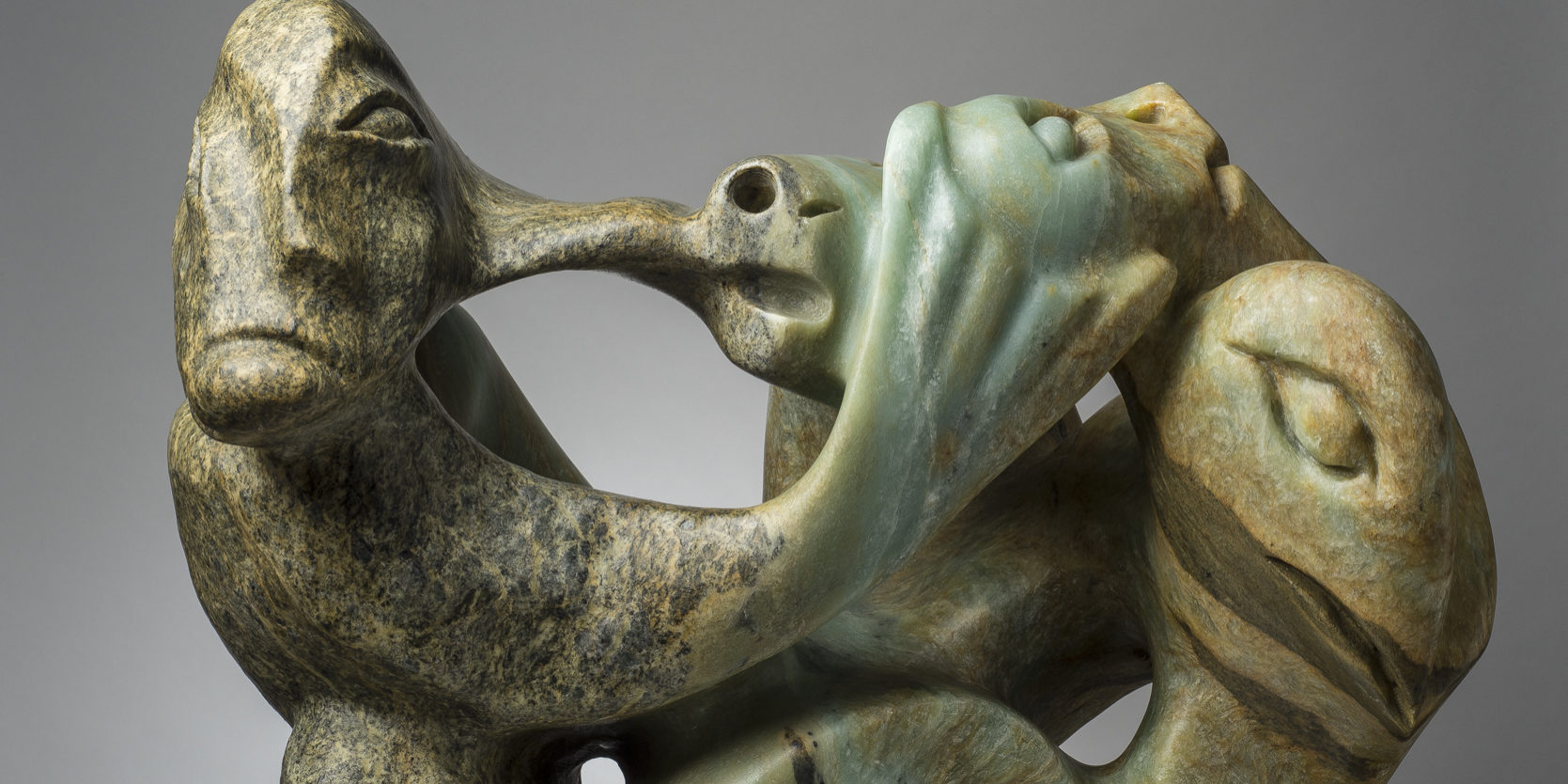
Abraham Anghik Ruben
Study for Arctic Apocalypse
ARCTIC VOICES
November 14 - February 23, 2025
Germaine Arnaktauyok
Kenojuak Ashevak
Betsey Biggs
William Bradford
George Critcherson
John L. Dumore
Lucassie Echalook
Rena Bass Forman
Zaria Forman
Viktor Iadne
Helen Kalvak
Janet Keegooseot Kigusiuq
Quvianaqtuk Pudlat
Abraham Anghik Ruben
Nicotye Samayualie
Lene Tangen
Ningiukulu Teevee
Boston & Sandwich Glass Company
The New Bedford Art Museum in partnership with the New Bedford Free Public Library and Look North Gallery presents: Arctic Voices, an exhibition representing artistic responses to the arctic region across time and cultures. The exhibition offers a range of perspectives from 19th century explorers/artists, Inuit and indigenous peoples of the Arctic region and 21st century contemporary artists. Consider how the competing ideas throughout history motivate artists’ investigations and shape their approach to the landscape and representations of culture.
Discover philosophically contrasting world views of human’s relationship to the natural world and shifting attitudes towards conservation as portrayed in sculptures, paintings, prints, glass, photography, and other media.
Renowned explorer/painter and New Bedford native son William Bradford made six expeditions to the Arctic between 1861-1866. The exhibition includes a selection of his sketchbooks and photographs from some of those expeditions as well as several oil paintings he made upon his return.
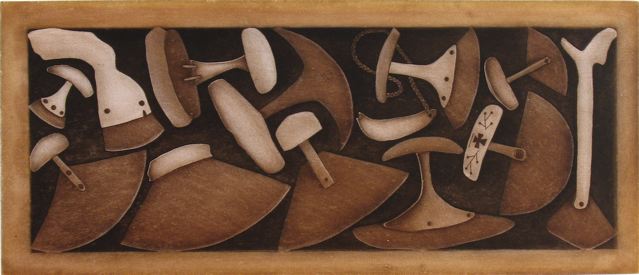
Germaine Arnaktauyok
ULUIT, 2003
Germaine Arnaktauyok is an Inuit artist born in 1946 in Igloolik, Nunavut, Canada. She is the daughter of carvers Therese Nattok and Isidore Iytok.
Arnaktauyok is renowned for her talents as an illustrator and master printmaker. At an early age, she liked to draw on any material she could find. When Arnaktauyokwas nine, she was sent to a residential school at Chesterfield Inlet, where she received art lessons. At age eleven, she sold her first painting.
Arnaktauyok participated in a variety of art courses, including spending one year at the University of Manitoba in the Fine Arts program enrolled in a printmaking course sponsored by the Arctic College and Arts in Induvik, Canada. She also studied commercial art at the Pembroke Campus of Algonquin College in Ottawa in 1969.
While in Ottawa, Arnaktauyok was employed by the Department of Indian and Northern Affairs as an illustrator for various Inuit publications. She later moved to Iqaluit, where she worked for the Frobisher Arts and Crafts Centre for five years. While in Iqaluit, the Pembroke branch of Algonquin College offered her the opportunity to participate in a year-long course involving historical and cultural techniques of crafting.
For several years, Arnaktauyok worked in educational positions before returning to Iqaluit to study printmaking at Arctic College in 1992.
Arnaktauyok had her first public exhibition at the Winnipeg Art Gallery in 1998. The exhibition featured her drawings and prints from 1970–1997.
In 1999, she designed a special edition two-dollar coin commemorating the founding of the territory of Nunavut for the Royal Canadian Mint.
Arnaktauyok had great success as an illustrator of children’s books written in both Inuktitut and English. Her illustrations are included in children’s books from the Baffin Divisional Board of Education, Hyperion Press in Winnipeg, and the books of Nick Nicol, a Canadian author published in Japan. She is also the a co-author and illustrator of “My Name is Arnaktauyok: The Life and Art of Germaine Arnaktauyok” published in 2015.
Arnaktauyok developed a unique technique whereby she draws many fine coiled lines, creating rich texture. Apart from drawing, she works and experiments with different mediums, including lithographs, etchings, serigraphs, prints and textile. She is best known for depicting Inuit myths, legends, traditional ways of life, stories and feminist narratives centred on birth and motherhood.
The artist now lives in Yellowknife, Northwest Territories. Her works can be found in many international and Canadian collections, including the Winnipeg Art Gallery, the Amway Environmental Foundation Collection, the Prince of Wales Northern Heritage Centre in Yellowknife, the Indigenous Art Collection at Indigenous Affairs and Northern Development Canada in Gatineau, and the Glenbow Museum in Calgary.

Kenojuak Ashevak
At The Nest, 1982
Kenojuak Ashevak was one of Canada’s most acclaimed graphic artists. Her long list of achievements and honours is surpassed only by her stamina and good humour.
Born on south Baffin Island at a camp area known as Ikirisaq, Kenojuak grew up traveling from camp to camp on south Baffin and in Arctic Quebec (Nunavik). As a young woman, she was married to Johnniebo and lived with him in various camps including Keakto, a scenic area seven miles from Cape Dorset. While still living at Keakto in the late 1950's, both Kenojuak and Johnniebo first experimented with carving and drawing. They moved to Cape Dorset in 1966 in order for their children to attend school, and continued to work closely together until Johnniebo's death.
Kenojuak’s drawings were immediately captivating, and she was represented in almost every annual print collection since 1959. Her work has also been included in numerous special projects and commissions. In 1961 she was the subject of a film produced by the National Film Board about her traditional life and art. The film is still shown today, and was instrumental in introducing her to the world beyond Cape Dorset. In 1970 her print, Enchanted Owl (1960) was reproduced on a stamp commemorating the centennial of the Northwest Territories, and again in 1993 Canada Post selected her drawing entitled The Owl to be reproduced on their .86 cent stamp.
Special commissions included the World Wildlife Print Portfolio released in 1978. In the same year, the Commonwealth Print Portfolio featured one of her works. Her art and life were the focus of the limited edition book entitled Graphic Arts of the Inuit: Kenojuak, published in 1981. In 1988, Via Rail Canada commissioned a large mural from Kenojuak for their Club Car series, which featured some of Canada’s most highly respected artists. Kenojuak's print Nunavut Qajanatuk (Our Beautiful Land) was commissioned by Indian and Northern Affairs Canada to commemorate the signing of the Inuit Land Claim Agreement in Principle, in April 1990. To commemorate the signing of the Final Agreement early in 1994, Kenojuak conceived and hand-coloured a large and exclusive lithograph entitled Nunavut.
April 1st, 1999 marked the official inception of the new Territory of Nunavut in Canada’s Arctic. To commemorate this historic event, Dorset Fine Arts released a special edition of 99 prints by Kenojuak – a large diptych entitled Siilavut, Nunavut (Our Environment, Our Land).
Kenojuak received many special honours over the years. She was a Companion in the Order of Canada, which she originally received in 1967. In 1992, she was awarded Honourary Degrees from both Queen's University and the University of Toronto. In 1996 she received the prestigious Lifetime Achievement Award at the National Aboriginal Achievement Awards Ceremony in Vancouver. In the spring of 2001, Kenojuak was inducted into Canada’s Walk of Fame, and traveled with her daughter, Silaqi, to attend the ceremonies in Toronto. She is the first Inuit artist to be so honoured, and joined many other famous and accomplished Canadians.
Kenojuak traveled all over the world as an ambassador for Inuit art. In 1969, she and Johnniebo traveled to Ottawa to collaborate on a mural which hung in the Canadian Pavilion at Expo '70 in Osaka, Japan. In 1980, she traveled to Rotterdam, Holland to be present at The Inuit Print exhibition which was opened by the Queen of the Netherlands. In 1991, she traveled to Soeul, South Korea to attend the opening of an exhibition of prints and sculpture, and in 1994, she was invited to open the exhibition Arctic Spirit: 35 Years of Canadian Inuit Art at the Frye Art Museum in Seattle, Washington. She also traveled to Ottawa in the fall of 1994 for the opening of Isumavut: The Artistic Expression of Nine Cape Dorset Women. In 2004, she was off to Germany to take part in cultural festivities celebrating the territory of Nunavut, and her contribution to Inuit graphic art. Her major stained glass commission was installed in the fall of 2004 at the John Bell Chapel at Appleby College just west of Toronto.
In the fall of 2007 Kenojuak traveled to Toronto to attend the launch of Cape Dorset Prints: A Retrospective – a major publication celebrating fifty years of printmaking at the Kinngait Studios. IN 2008, she added to her list of honours the Governor General’s Award for excellence in the visual arts. Sponsored by the Canada Council for the Arts, she traveled to Ottawa in March 2008 with her daughter, Silaqi, to attend the exhibition at the National Gallery and events at the residence of the Governor General. She was back in Ottawa in 2009 to participate in events surrounding the 50th anniversary of the Kinngait Studios.
In January, 2013, after a long and illustrious career, Kenojuak died peacefully at home surrounded by her loving family.
Betsey Biggs
MELT (topographic remix)
Betsey Biggs is a composer and artist whose work connects the dots between sound, image, place and technology, and has been described by the New Yorker as “psychologically complex, exposing how we orient ourselves with our ears.” For more than twenty years, she has composed music and created multimedia performances and art installations. She has collaborated with artists such as Jennie Livingston, So Percussion, and Samson Young, and her work has been presented at the Sundance Film Festival, MASSMoCA, ISSUE Project Room, and Hong Kong’s Videotage.
Recent projects include an immersive cinematic song cycle (MELT: the memory of ice (topographic remix), a geo-tagged web-based audiovisual experience (wearehere.fm), and an international radio collective (Conduction Series) broadcasting monthly on Wave Farm. She studied at Colorado College, Mills College and Princeton University, and has taught music, multimedia, public art, photography, and video at Brown University, RISD, and the University of Colorado, where she currently serves as Assistant Professor of Critical Media Practices.
MELT (topographic remix) is a spatial remix of my music-film MELT: the memory of ice, an invitation to sit bedside in communion with our earth’s body melting and spilling through climate change. Created during a summer spent in Greenland with my mother and 5-year-old, the installation creates a spectacular, otherworldly, immersive river of icebergs, increasingly interrupted by flashes of memories of the north. A musical drone rich with glimmers of sound — calving ice, reindeer bells, sled dogs — surrounds a choir reciting an unfathomable list of winter’s loss — flurries, orca, snow angels. The transformation and relocation of the film's sounds and images opens up a new, imaginative space for the audience to sit with and wander through, a kind of inner topography of the north. The ice melts on.
I made this project after wandering around the world’s most active glacier, in Ilullisat, Greenland, with my mother and 5-year-old daughter. As I struggle to give my child the same intimacy with the wild I enjoyed , I find myself wondering: will there be winter in the world when she is my age? So many films invite you to think about the facts and figures of climate change; I wanted to offer people something different: a glimpse at the experience I had in Greenland, a chance to slow down and feel, and be with the earth’s ice as it melts and spills its way through climate change, to witness their own feelings as music washes over them. I hope it resonates with you.
Artist/director/composer: Betsey Biggs
Cinematographer: Troy Fairbanks
Vocalists: Moving Star (Sasha Bogdanowitsch, Emily Eagen, Tim Kiah, Jeremy Lydic, Holly Nadal, Onome, Peter Sciscioli)
Solo Vocalist: Hazel Biggs
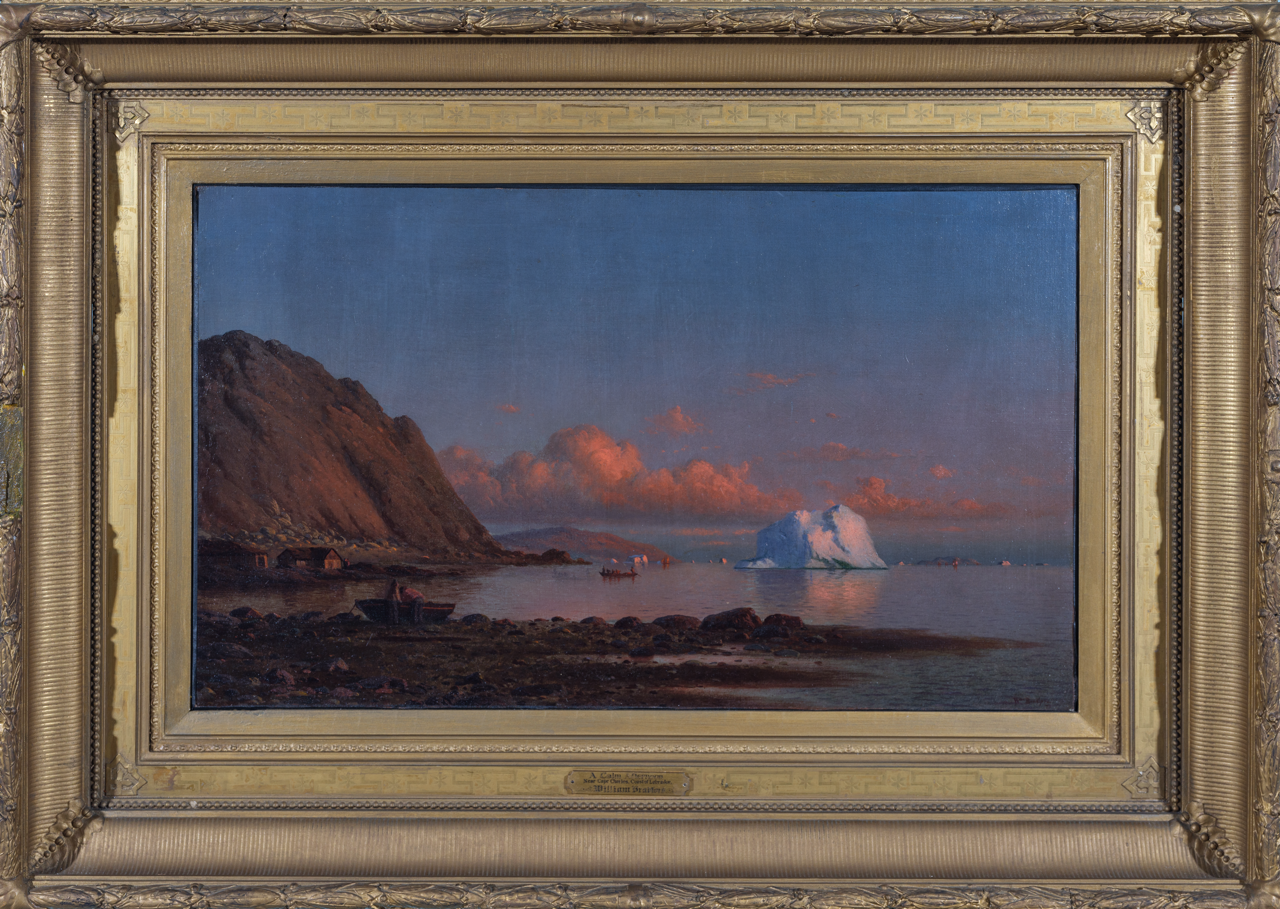
William Bradford
A Calm Afternoon Near Cape Charles, Coast of Labrador, 1875
William Bradford was born in 1823 in Fairhaven and began his career painting ship portraits in a studio he shared with Dutch marine painter, Albert Van Beest. In 1861, tempted by recent accounts of arctic exploration, Bradford made his first trip north to the coast of Labrador. Bradford made five more trips to the coast of Newfoundland and Labrador before the end of the decade, and in 1869 he embarked of his final and most ambitious journey to the coast of Greenland and Baffin Bay. Along with Bradford on this trip, were photographers George Critcherson and John L. Dunmore and Arctic explorer Isaac I. Hayes. Bradford later published The Arctic Regions based on this journey and included 134 of Critcherson and Dunmore’s photographs. Bradford painted for decades works based on the sketches and photographs of the arctic made on this trip and his earlier expeditions.
The following from: Blasdale, Mary Jean. Artists of New Bedford: A Biographical Dictionary. Old Dartmouth Historical Society, 1990.
William Bradford April 30, 1823 - Fairhaven April 25, 1892 - New York City
William Bradford was born and brought up in Fairhaven. His parents, Melvin and Hannah Kempton Bradford, were of the Quaker faith, which did not look favorably on such pursuits as drawing and painting. As a young man Bradford was apprenticed in the mercantile business. He became a clerk in his father's dry goods shop in New Bedford. Much to his father's dismay, he spent all his free time making sketches and drawings. By the time Bradford was in his twenties, his father simply gave up hope for his son ever succeeding in business.
William Bradford married Mary Breed in 1846. She was the daughter of Nathan Breed, a prominent Quaker leader in Lynn, Massachusetts, who gave the couple a farm to provide their livelihood. However, Bradford never ceased to work at his art, and the farm failed.
Bradford began his professional art career by painting ship portraits, which he was able to sell for $25 apiece. New Bedford Harbor in the 1850s offered many whaling vessels as subjects, and owners took pride in having them portrayed in every detail. As Bradford perfected his art he was able to command larger sums for his work.
In 1854 Bradford had the good fortune to persuade Albert Van Beest to join him at his studio in Fairhaven. Van Beest was a Dutchman who had recently come to this country. For three years Van Beest collaborated with the Fairhaven artist. The two painters were able to meld their styles: the Dutchman brought a vibrant, fluid, animated approach to the canvas, while Bradford practiced a precise and meticulous draftsmanship, much concerned with detail.
Bradford's artistic endeavors led him away from Fairhaven. He began to spend summers by the sea in Swampscott and Nahant; he spent several winters in a studio in Boston. News accounts and books about recent explorations in Arctic regions tempted him to travel farther north himself. In 1861 he obtained the financial backing to outfit a schooner and venture forth to sketch and photograph the coast of Labrador. On this and subsequent voyages, he became fascinated with the special qualities of atmospheric light in northern regions.
In 1869, with the financial support of his benefactor Le Grand Lockwood, Bradford made a notable expedition to the Arctic on board the steamer Panther. Following this trip, he produced a book titled The Arctic Regions, published in 1873. This photographically illustrated elephant folio volume was published in England under the patronage of British royalty, including Queen Victoria. The artist also received a special painting commission from the queen. The result was a magnificent canvas called The "Panther" off the Coast of Greenland Under the Midnight Sun, now in the royal collection.
When Bradford returned to the United States he began to travel, both for the purpose of giving photographically illustrated lectures about the Arctic and in order to paint American landscapes. He had a studio in San Francisco for seven years and painted in the Sierra Nevada Mountains, Yosemite, and Mariposa Valley. During his lifetime Bradford had become a noted painter, lecturer, and photographer. He was also known as a man of great kindness, charm, and conversational power. There was great sorrow when he passed away in New York City just before his sixty-ninth birthday. His funeral was held in Fairhaven with interment at the Riverside Cemetery. He was honored there with two monuments: one a large granite boulder from the town inscribed with lines from Whittier, the other a large boulder brought back from Greenland by Admiral Peary.
Dates for working in the area: 1845-92
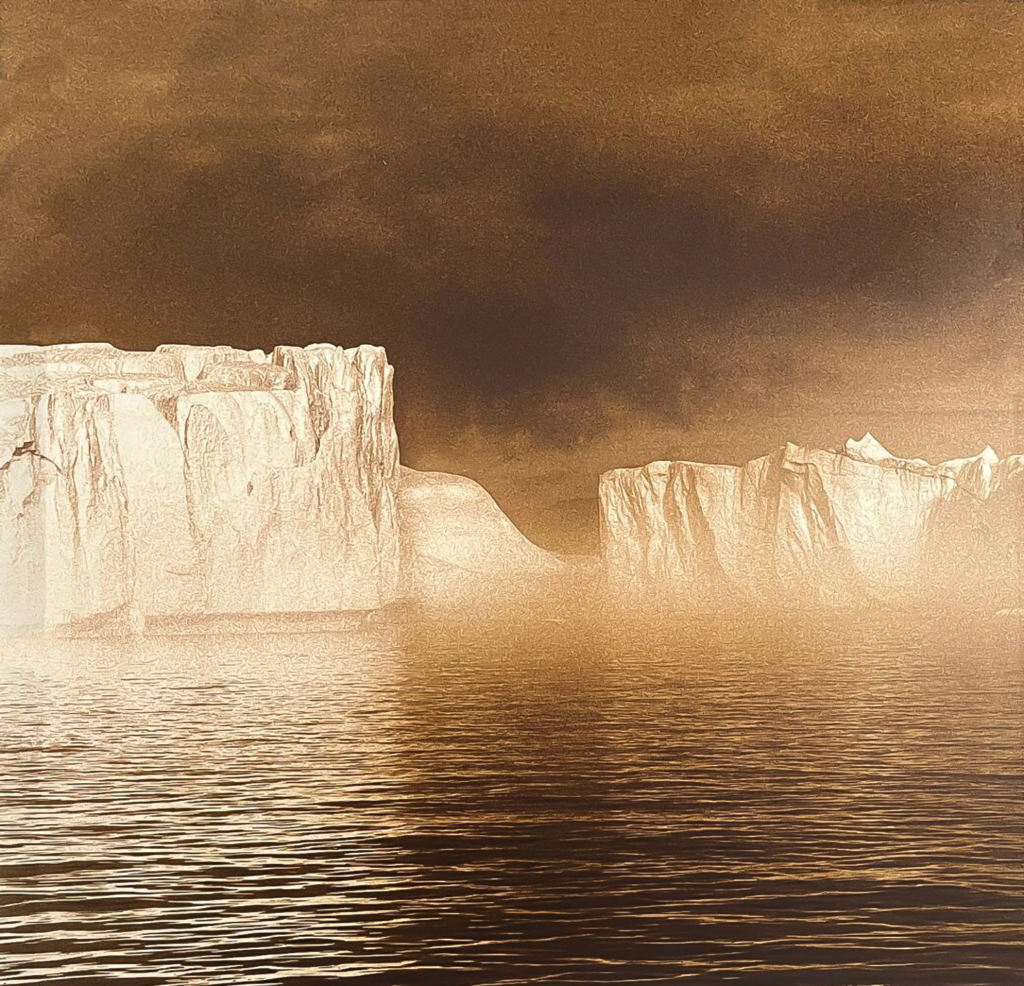
Rena Bass Forman
Greenland #1, 2007
Rena Bass Forman's process was inspired by both 19th century landscape photographers and explorers, as well as the painters of the Hudson River School. Her Arctic and Antarctic photography took her to the polar regions of Patagonia, Chile, Iceland, Greenland, and the Canadian Arctic. Her work was featured in Photographs from the Ends of the Earth at the Milwaukee Art Museum. Curator Lisa Hostetler states that "Rena Bass Forman is an heir to the grand tradition of 19th century polar photography practiced by Dunmore and Critcherson, Wilczek, and Hurley." Her polar photographs are deeply infused with the unique quality of light found in these regions. The large-scale, sepia toned prints emanate a mystical calm that is in harmony with the spectacular nature of her subject matter.
Rena Bass Forman earned a Bachelor of Arts degree in Art History in 1975 from Hofstra University, Long Island, New York and studied Arts Administration at Rutgers University, New Jersey (1979). She had numerous solo exhibitions including shows at Winston Wächter Fine Art, New York and Bonni Benrubi Gallery, New York. She participated in many group exhibitions, and her work is in several collections including those of Citicorp and Goldman Sachs, New York City, the Cleveland Museum of Art, Ohio and the Henry Museum, Seattle, Washington. In 2008 Look North Gallery's exhibition, Polar Light:Greenland, showcased the Greenland photography of Rena alongside the Greenland drawings of her daughter Zaria Forman. The show was held in conjunction with Al Gore's Climate project as a climate change awareness exhibition.
Credit LOOK NORTH GALLERY
A talented and prolific photographer, Rena Bass Forman created sepia and black and white photographs of landscapes, ruins, and vistas. Her romantic and dramatic images recall the work of great nineteenth-century painters and photographers who, like Bass Forman, traveled the world in search of natural wonders and emotive scenery. By using large format film to document some of the most spectacular settings on earth, her images accentuate the nostalgic and textural qualities of film photography.
Rena Bass Forman traveled to vastly different landscapes from Sri Lanka, to Newfoundland, the Pacific Northwest, and Italy among many others. The inspiration drawn from wilderness helped raise awareness for the beauty and fragility of the natural world and informed the work of her daughter Zaria Forman. Bass Forman’s photographs are held in a number of prestigious collections, including the Cleveland Museum of Art, the Milwaukee Art Museum, and the United States Embassy in Iceland
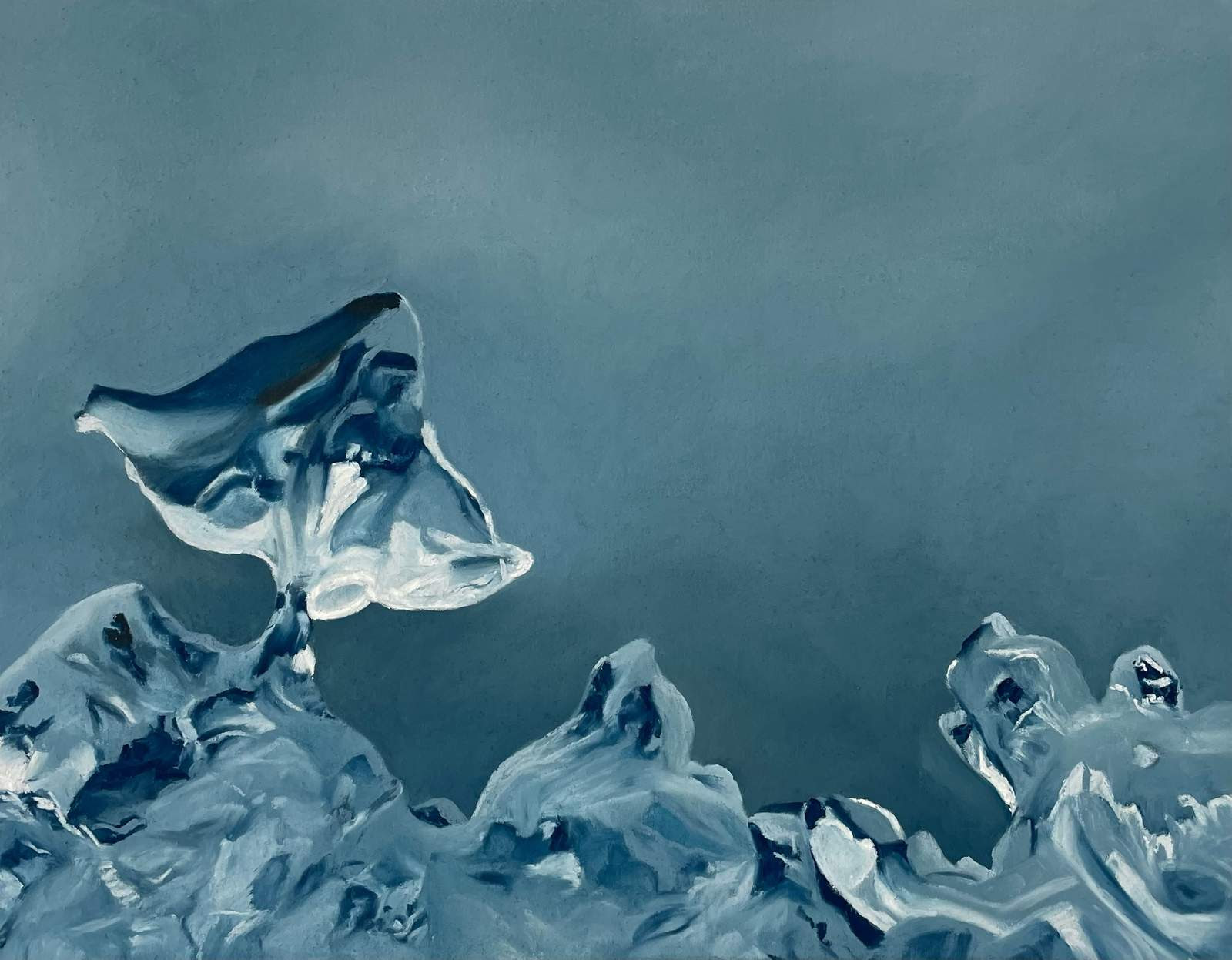
Zaria Forman
Fellsfjara, Iceland, no. 17, 2022
Zaria Forman documents climate change with pastel drawings. She travels to remote regions of the world to collect images and inspiration for her work, which is exhibited worldwide. She has flown with NASA on several Operation IceBridge missions over Antarctica, Greenland, and Arctic Canada. She was featured on CBS Sunday Morning, CNN, PBS, and BBC. She delivered a TEDTalk, and spoke at Amazon, Google, and NASA’s Goddard Space Flight Center, exhibited in Banksy’s Dismaland, and was the artist-in-residence aboard the National Geographic Explorer in Antarctica. Forman curated the first ever, permanent, polar art exhibitions aboard Lindblad Expeditions-National Geographic Endurance and the National Geographic Resolution. Her works have appeared in publications such as Vogue, The New York Times, National Geographic, The Wall Street Journal, and the Smithsonian Magazine. Forman currently works and resides in upstate New York, and is represented by Winston Wächter Fine Art in New York, NY, and Seattle, WA.
Fellsfjara, Iceland no 17, April 22, 2022, is part of Zaria Forman's drawing series Fellsfjara, Iceland. Named for the location of a glacial lagoon on Iceland’s southeastern coast, the drawings feature studies of polar ice that have accumulated on a black sand beach. In magnifying the intricate details of the melting ice, Forman reflects the grandeur and fragility of the Arctic terrain in a warming climate. For two decades, Zaria Forman has traveled the world to bear witness to melting ice and rising sea levels. She meticulously documents the imprint of these forces on rapidly-evolving landscapes, using photo and video to inform highly detailed pastel drawings that convey the urgency of climate change.
During her trips to Fellsfjara, Forman encountered ancient, compressed ice with brilliant clarity, revealing unprecedented character and complexity. The work in this exhibition amplifies these details, each crack, bubble and distortion carrying the narrative of the ice’s journey from its prehistoric formation to today. In close-up views of glacial ice set against the velvety richness of churning Arctic waters and black sand, these works add to Forman’s career-long contemplation of light and ice; of humanity and nature; of time spent and time left. Forman offers a nuanced clarion call, encouraging viewers to notice, appreciate and protect the earth’s most vulnerable landscapes.
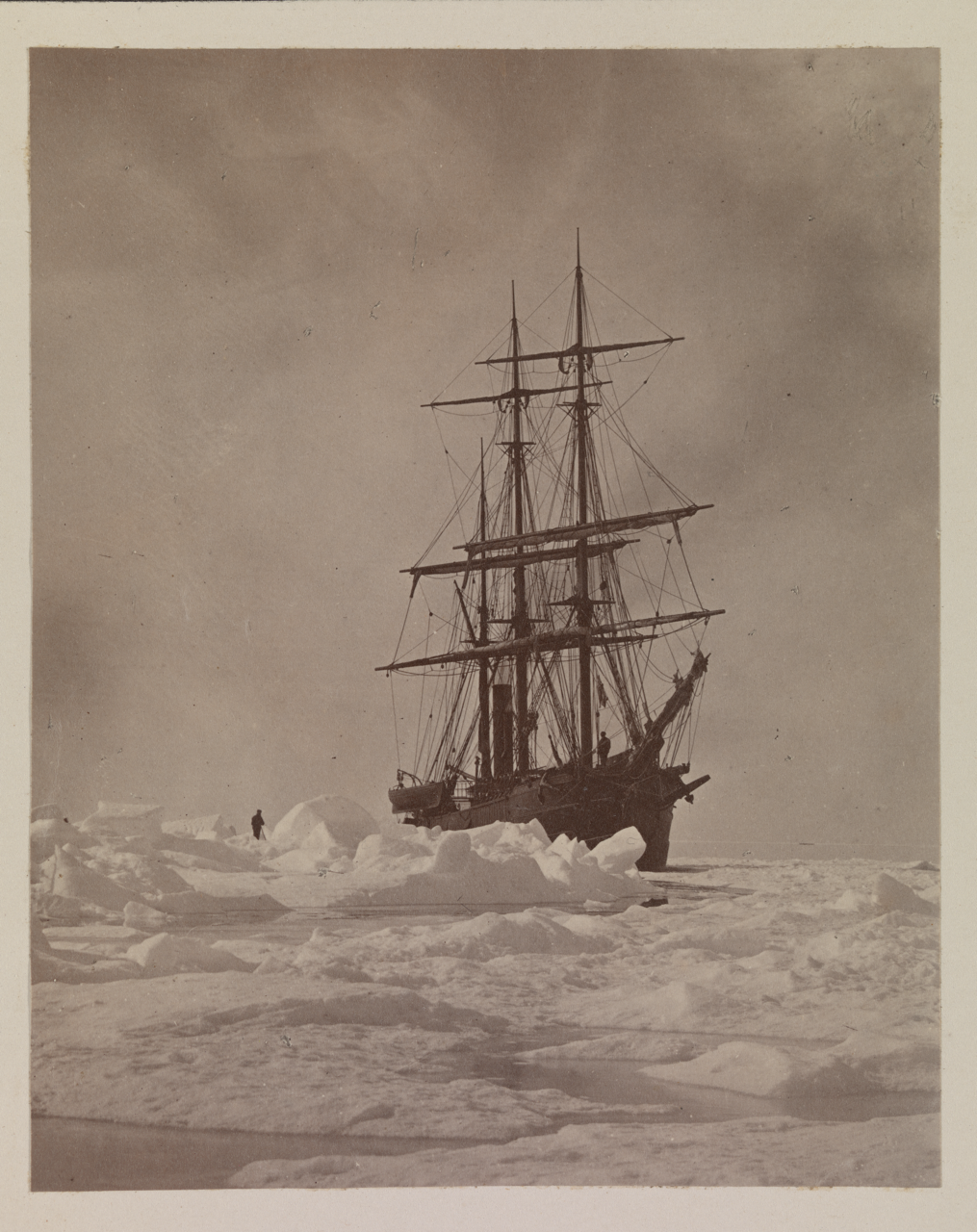
George Critcherson & John L. Dunmore
Where we patiently waited and quietly hoped for the ice to open (The Panther in an ice pack), from The Arctic Regions by William Bradford, 1873
New Bedford Free Public Library
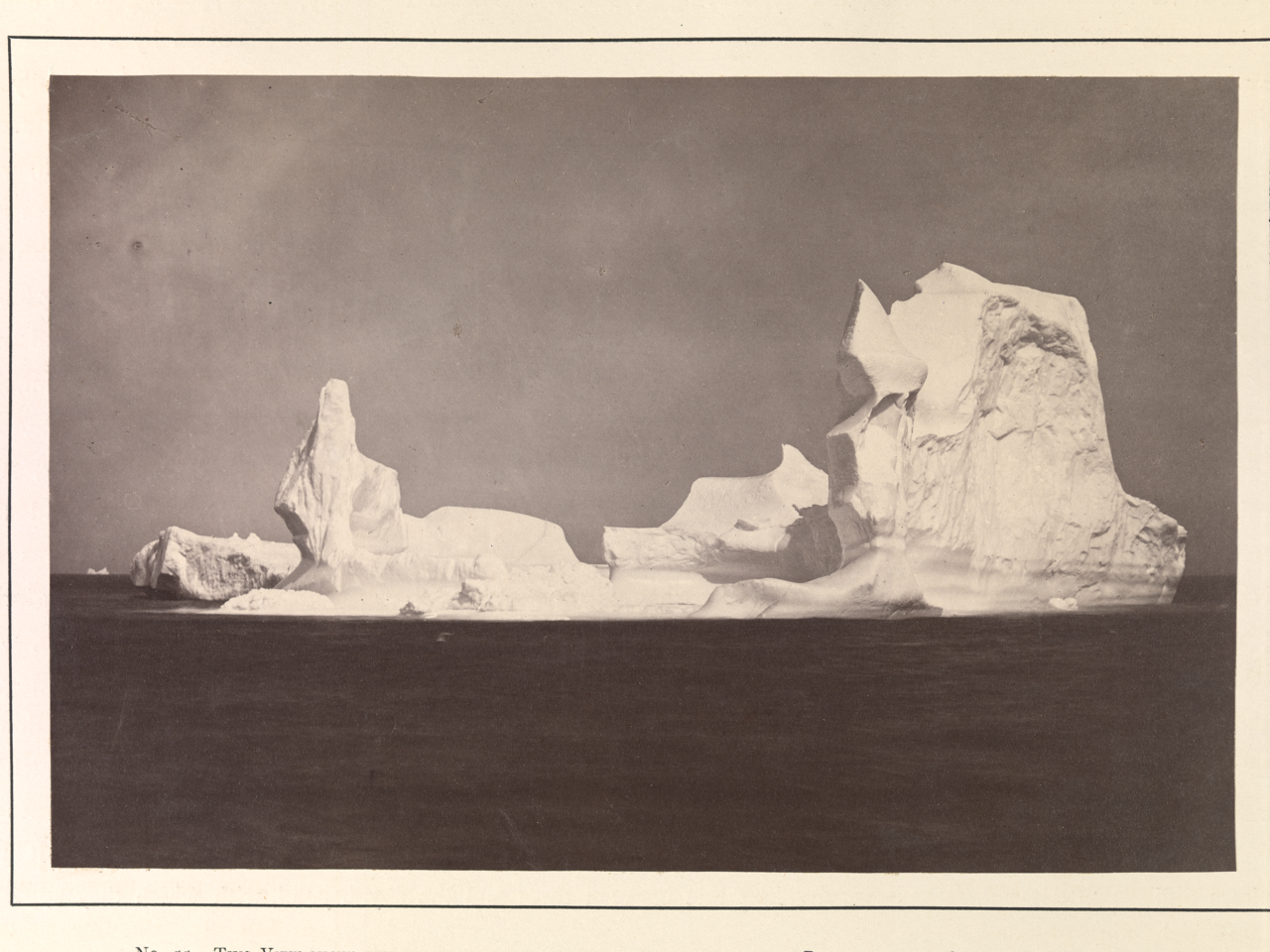
George Critcherson & John L. Dunmore
This view shows the beautiful forms in varied shapes which the berg assumed, from The Arctic Regions by William Bradford, 1873
New Bedford Free Public Library
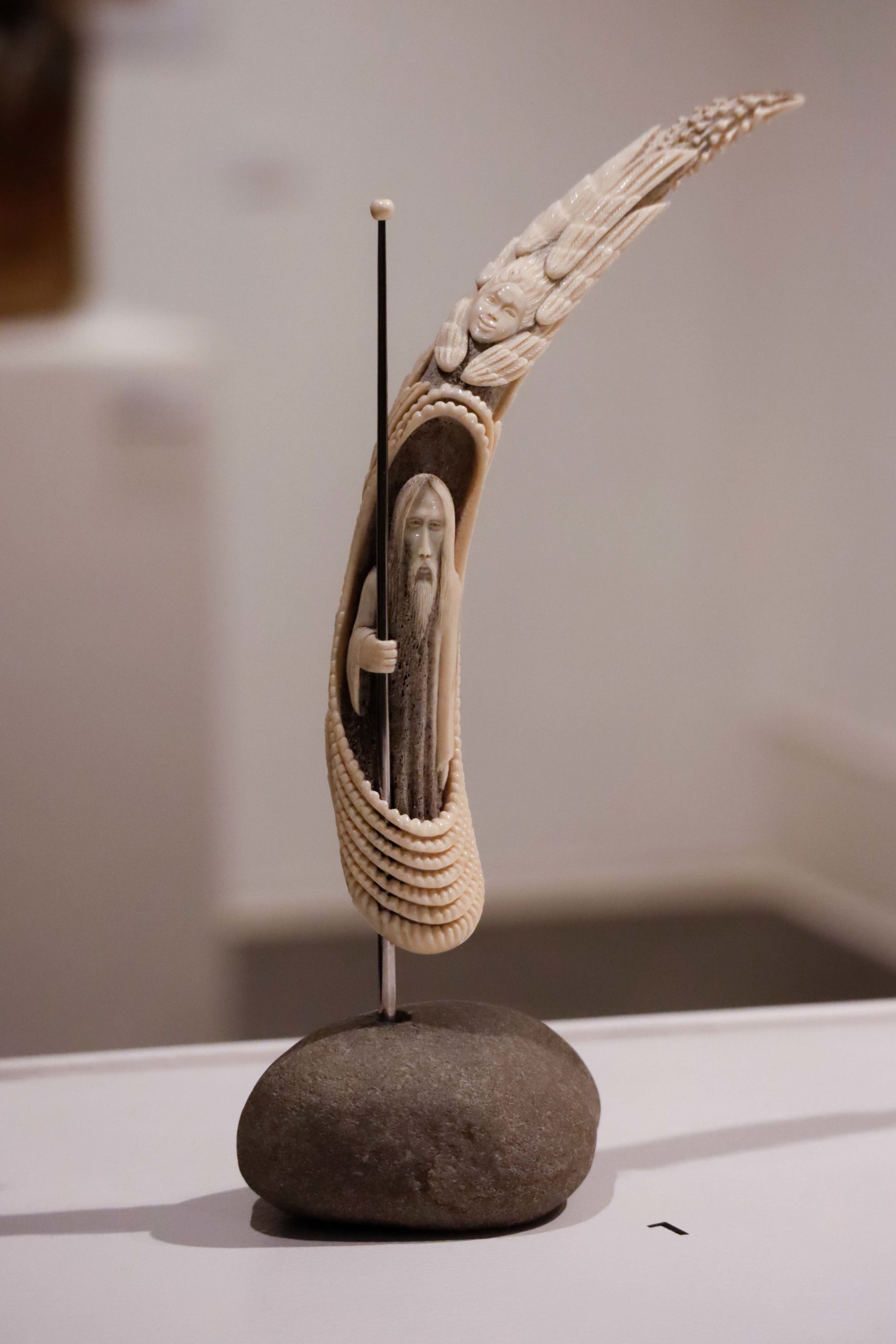
Viktor Iadne
Num
Born in 1971, Nenets artist, Viktor Fedorovich Iadne is recognized as the People's Master of the Russian Federation. He and his wife, Inna Iadne, are craftspeople renowned for their exceptional, intricate carvings. As a member of both the Union of Artists of Russia and the Creative Union of Artists, Viktor has achieved master status in the Yamalo-Nenets Autonomous District. His artistry goes far beyond technical skill, embodying a deep connection to his Indigenous Nenets heritage and the spiritual traditions of his ancestors. Viktor's choice of materials, such as mammoth tusk, ebony and bone, enhances the symbolic nature of his work, which is celebrated for its intricate detail and profound cultural meaning.
Viktor’s creations often weave together European, Asian, and Yakut traditions with shamanistic spirituality, resulting in pieces that reflect his unique worldview. One of his most renowned works is a carving of the Spirit of the Ocean, represented as a whale emerging from otherworldly realms. This piece, crafted from mammoth tusk and resting on an ebony base, symbolizes Viktor's reverence for nature and the spiritual forces that protect it. His art frequently serves as a conduit for blessings and protection, especially for natural elements like water, which is central to the Nenets culture.
Despite his global recognition, Viktor's heart remains tied to his remote homeland, where he has used his work to preserve and share the Indigenous traditions of the Yamal region. His art acts as a storyteller, preserving the voices and customs of his ancestors for future generations.
Amid the turmoil of Russia's war on Ukraine, Viktor and his family sought asylum in New York City, leaving behind their homeland and the legacy they had built in the Russian Federation. The conflict forced them to start over in a foreign land, navigating the challenges of rebuilding their lives and careers in America. Despite the upheaval, Viktor continues to create art that reflects his deep-rooted connection to his Indigenous culture, now blending it with the resilience and hope that comes from forging a new path in an unfamiliar world. His family’s journey stands as a testament to their strength and commitment to their artistic and cultural heritage.
By Viktor Iadne
This captivating sculpture depicts a solitary boy standing on snowshoes atop a high hill. His head is lifted high, and he gazes into the sky, as if searching for his path among the stars or seeking answers from the universe.
The boy's hands clutch a traditional Nenets lasso for catching reindeer. He stands on the hill to bring himself closer to the heavens. His face, like a mask, conveys a sense of calm and hope, as if he trusts that the universe will not abandon him on his journey.
The sculpture embodies the search for purpose and the hope for a brighter future. It conveys a sense of solitude and vulnerability, but also of the boy's strength and determination.
This exquisitely crafted sculpture is a testament to Viktor Iadne's talent and his deep understanding of human emotion and the human condition. It would make a прекрасным дополнением to any collection or public space, where it will inspire viewers to reflect on their own journeys and dreams for the future.
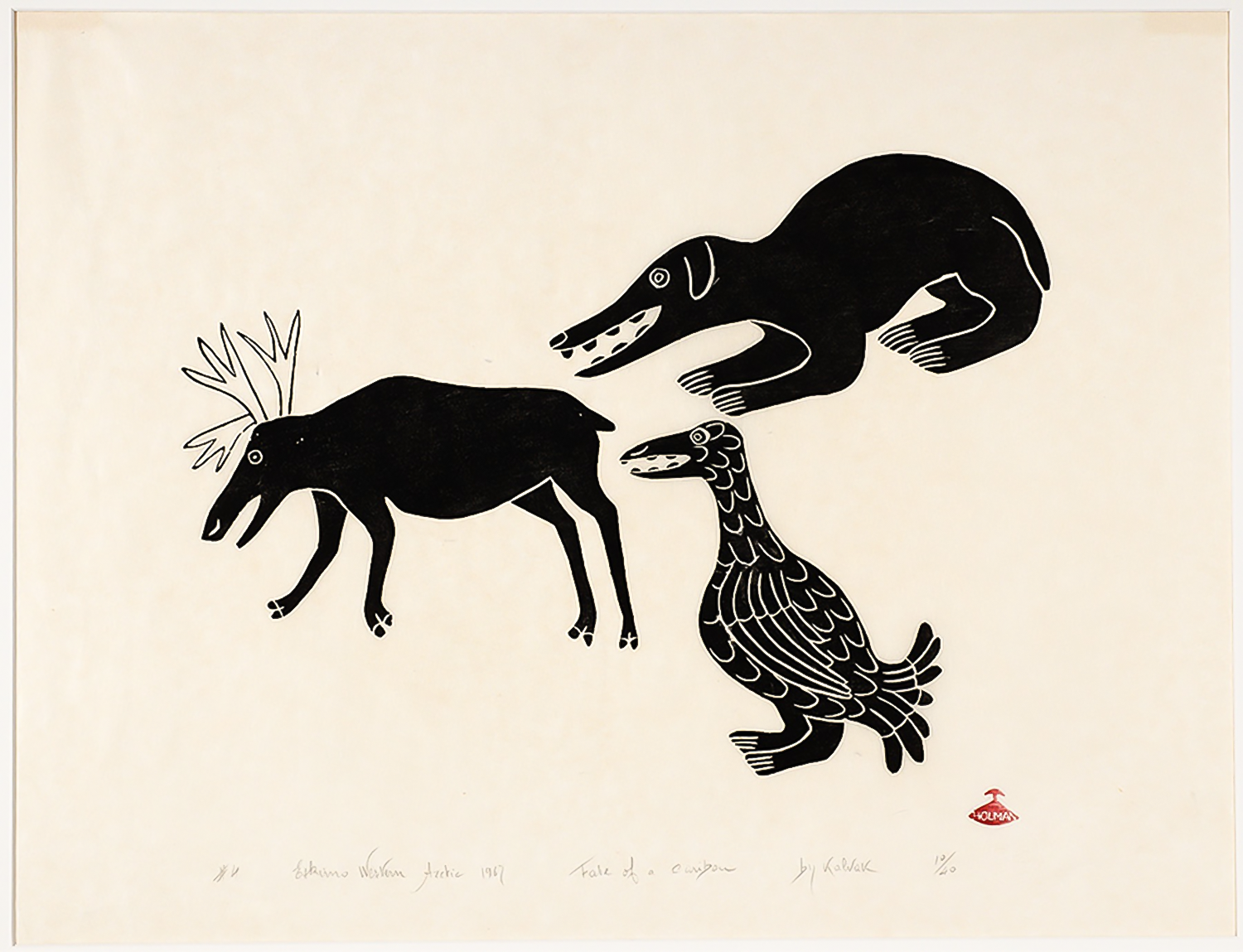
Helen Kalvak
Fate Of Caribou, 1967
Helen Kalvak was a graphic artist who chronicled the traditional lives of the Copper Inuit in her drawings. Born at Tahiryuak Lake, Victoria Island, she was raised in the Prince Albert Sound area, married, and lived a traditional Inuit lifestyle until the sudden death of her husband in 1960. Kalvak then moved to Ulukhaktok (formerly Holman), and the following year, at the age of 60, helped establish the Holman Eskimo Co-operative and began to create her distinctive works of art. A prolific artist, she produced more than 3,000 drawings, many made into prints and sold internationally. Decorated with traditional beautifying facial tattoos, Kalvak was inducted into the Royal Canadian Academy of Arts in 1975 and made a Companion of the Order of Canada in 1978. Kalvak's drawing, The Dance, was made into a Canada Post stamp in 1981.

Janet Keegooseot Kigusiuq
Wrestling, 1969
Janet Kigusiuq was born in 1926 in the Back River area of the Keewatin region of the Nunavut. Kigusiuq came from a large family of artists, and was the eldest daughter of celebrated artist Jessie Oonark. Her siblings included artists Victoria Mamnguqsualuk, Nancy Pukingrnak, Peggy Qablunaaq Aittauq, Mary Yuusipik Singaqti, Josiah Nuilaalik, Miriam Marealik Qiyuk, and William Noah.
Kigusiuq began drawing in the late 1960s. She was encouraged by her mother to draw as a means of making money. In 1970, two of her prints were included in the Baker Lake Print Collection. Throughout her career, Kigusiuq experimented with diverse media including drawings, fabric wall hangings, stone sculptures and paper collages. She created her first collage in 1995 as part of a diploma program set up by the Arctic College in Qamani’tuaq. Her works often depict bold and brightly-coloured landscapes and camp scenes, intimate portrayals of traditional Inuit life, and Inuit myths and legends.
As her career progressed, Kigusiuq experimented further, incorporating more colour and greater abstraction into her works. In 2002, she became an elected member of the Royal Academy of Arts. Her work can be found in many private and public collections, including the National Gallery of Canada in Ottawa, the Canadian Museum of History in Gatineau, and the Winnipeg Art Gallery.
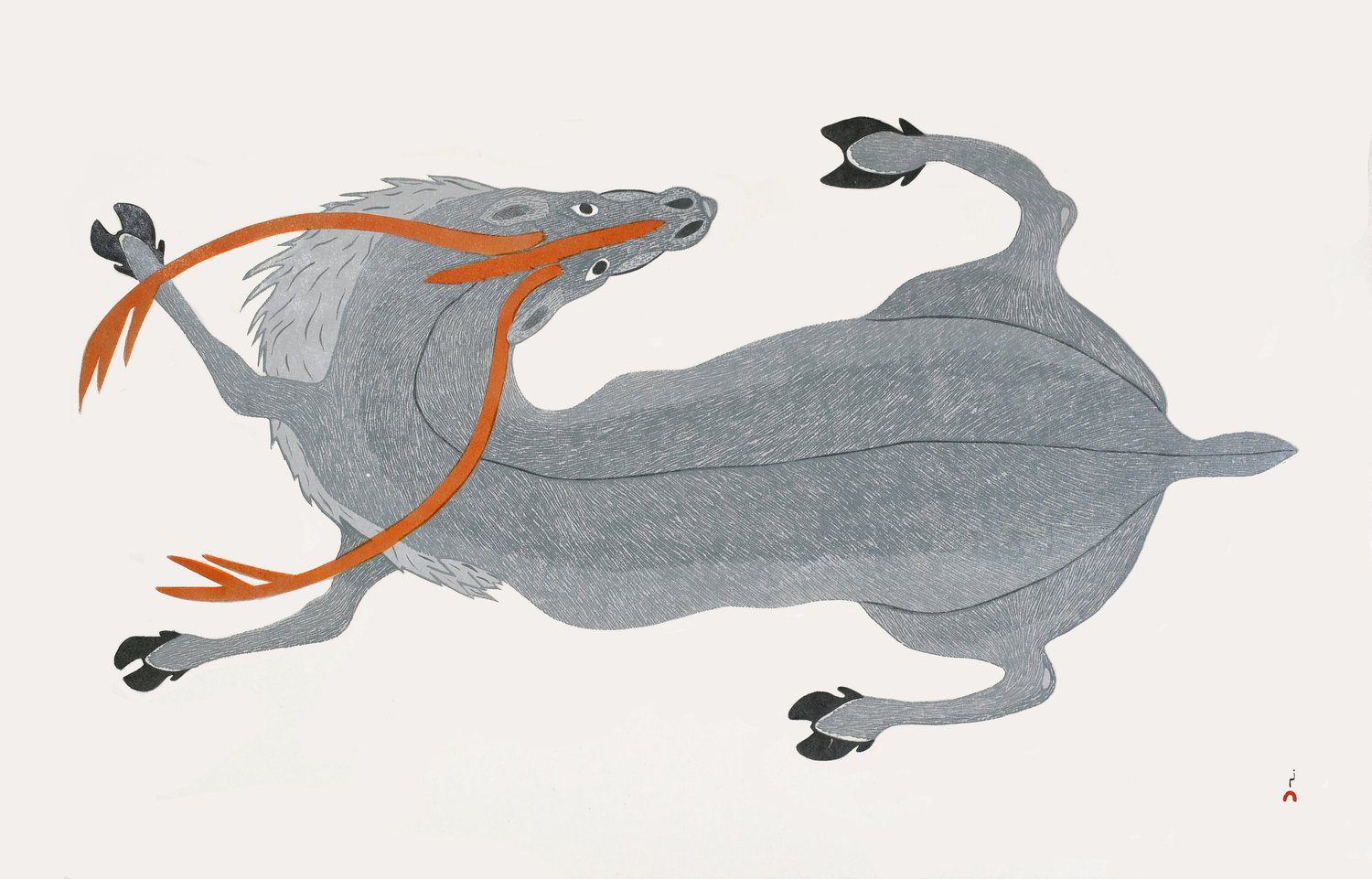
Quvianaqtuk Pudlat
Silver Caribou, 2022
Quvianaqtuk’s parents were both printmaking artists and his grandfather Simeonie Quppapik was a well-known artist, printmaker and typographer.
For many years, Quvianaqtuk was a well-respected sculpture and his carvings of animals and birds are in many fine collections. Recently, he began drawing and several of his prints have been included in the Cape Dorset Annual Print Collection since 2017.
In the spring of 2020, Quvianaqtuq was the Inuit artist-in residence at Open Studio in Toronto. While there. he produced two serigraph editions, Playful Foxes I and II.
Quvi, as he is referred to by his friends, is a serious hunter and his keen observations of the natural world is reflected in the movement and anatomy of the animals in his compositions.

Abraham Anghik Ruben
Calling Of The Spirits, 2020
Powerful, compelling, exquisite are but a few of the words to describe the work of master sculptor Abraham Anghik Ruben. Stories, myths and legends of ancient Northern cultures find new life and expression through his work. Linked by strong narratives, his sculptures speak of cultures lost and times forgotten.
Abraham was born in 1951 in a camp south of Paulatuk, Northwest Territories and east of the Mackenzie River Delta. This region is home to the Mackenzie Inuit or Inuvialuit. The late 1890s would see the arrival of large-scale commercial whaling fleets into the region soon followed by an influx of Inuit from Alaska.
Abraham’s own great-grandparents, noted shamans Apakark and Kagun came from the Bering Sea region of Alaska during this time. Abraham pays tribute to them in the sculpture Apakark and Kagan-Journey to the Underworld (plate 14). By the time of Abraham’s birth, Inuit culture was in the midst of a profound change that would forever alter their traditional way of life and set the stage for Abraham’s lifelong quest to re-discover and connect with his roots.
Up until the age of 8 Abraham lived with his family on the land migrating with the changing patterns of the seasons. As it had been for thousands of years, life was hard and the family needed to rely on the skills and efforts of all members to ensure survival in one of the harshest environments on earth. In 1955 this existence was to change dramatically for Abraham when heartbreaking time for the family is eloquently captured in The Last Goodbye. This same scene would be repeated again when Abraham and his other brothers were themselves sent away. This sadness and horror of life at these schools would come to light many years later, but for Abraham the pain endured during those eleven years came early and would continue to haunt him throughout his life [...]
Abraham’s quest to reconnect with his past found artistic form in 1971 when he attended the Native Arts Centre at the University of Alaska studying under Ronald Senungetuk. Throughout the 1970s Abraham pursued a career as an artist working in the varied media of sculpture, jewelry, prints and drawings. He would soon catch the attention of art dealers across Canada including Jack Pollock who showed his sculptures at his gallery in Toronto in a series of solo exhibitions.
In 1986 Abraham moved to Salt Spring Island where he continues to live and work with his wife Patricia Donnelly and their children. Since that time, Abraham’s interests in exploring the stories, myths and legends of his ancestors have found artistic form in a multitude of works, which have been exhibited and collected internationally. His quest has also led in recent years to the exploration of other cultures and people who inhabited the Northern hemisphere.
As an artist, I have always been fascinated by the cultures and people of the Northern Hemisphere. This interest has led me to the ancient relation- ship between the Inuit and the Viking Norse. There are interesting parallels between these two northern people. At the time of first contact, they held similar spiritual and religious beliefs through their respective practices of shamanism. Their spiritual, cultural and artistic traditions developed over long periods of time, tempered by their relationship to the land, and the powerful spirits, that inhabited these places.
The Inuit believed in the existence of the Soul in all living things. The concept of reincarnation was central to family and community beliefs. As a vigorous group of Arctic people, the Inuit came from west to east, in wave after wave of nomadic bands, in search of new land and game. With the re-curved Asiatic bow and toggle harpoon, they hunted sea and land mammals. They traveled by kayak and umiak in summer and by dog team in winter.
The Inuit Shaman acted as mediator between the world of man, animals, and the spirit world. He was the keeper of Inuit stories, myths and legends... the repository of knowledge of the land and the secret worlds. The Viking Norse came into North America by way of migrations from their Scandinavian homelands through the British Isles, Ireland and the Northern Islands, Iceland and then Greenland. They had highly developed religious, spiritual, and cultural beliefs and artistic traditions.
The Viking Norse had a mythological landscape inhabited by gods and goddesses, giants, monsters and demons. Their sagas speak of their Shamanic beliefs. In Iceland, as in Greenland, the Viking Norse gave names to places and things, that held power in their imagination. They used the spirit names of the mountain, river, stream, valley and forest---protective spirits and malevolent ones as well.
My sculptures portraying Viking Norse myths, stories and legends have Norse decorative lines and motifs. These are designs that have adapted and changed to enhance visual impact, and to convey the sense of belonging to that place and time.
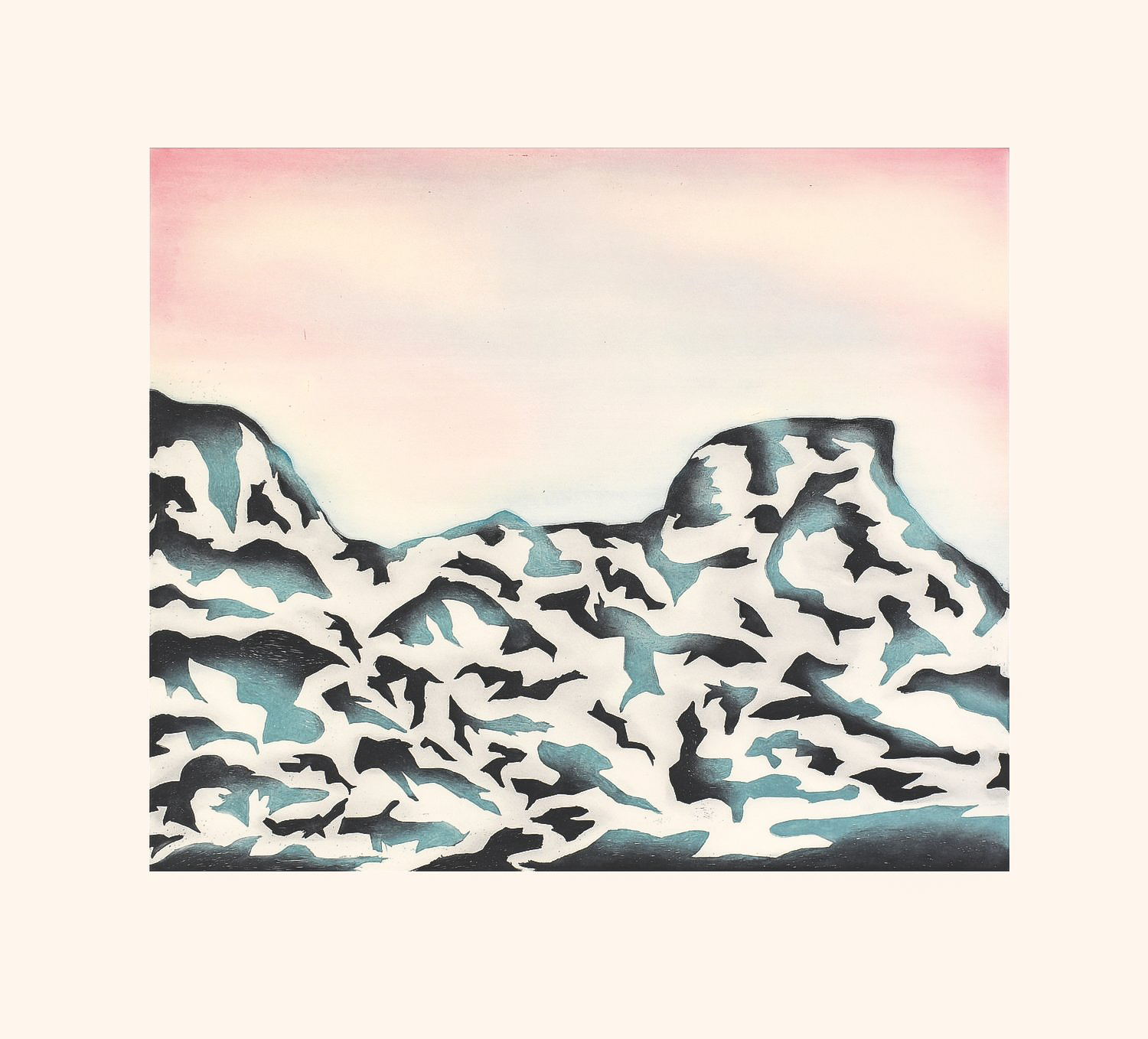
Nicotye Samayualie
Magic Hour, 2022
“Buttons attract me because they are made of different colours and shapes. I like colourful buttons.” -Nicotye Samayualie
Nicotye Samayualie was born on November 23, 1983. She is the daughter of Kudluajuk Ashoona and Johnny Tunnillie Samayualie. Nicotye’s grandmother, Keeleemeeoomee Samayualie was a well known graphic artist whose prints were represented in the Cape Dorset annual print collections throughout the 1970’s and 80’s.
Nicotye is fascinated by patterns and arrangements of disparate objects in nature and man-made materials. Many of her drawings depict everyday items such as the contents of a pantry shelf, a table of shiny fishing lures or boxes of camping supplies.
Nicotye has had her original drawings shown at the Toronto Art Fair and in 2013 her work was fea- tured in an Italian publication, ‘Annie e le Altre’, an ambitious scholastic study that explored the role of women artists in Cape Dorset.

Lene Tangen
Glacier's End
Lene Charlotte Tangen (b. 1971) is a Norwegian glass artist. Lene began her career working with ceramics as a medium for helping women immigrants transition to living in Copenhagen. In her twenties she traveled extensively as a stewardess for Scandinavian airlines, lived in several countries and studied Ayurvedic medicine in Sri Lanka.
A glassblowing class in 2002 ignited a passion, that led Lene to pursue a career as a full-time glass artist.
She graduated from the Royal Danish Academy of Art in Bornholm in 2011 and moved back to her native Norway in 2014, longing for the cold winters and ice-covered landscapes. There she set up her own casting and cold-working studio.
Her work has been exhibited at the The European Museum for Contemporary Glass in Germany, at shows such as SOFA Chicago and Collect London and most recently at the National Museum in Oslo in 2023. In 2021 she was awarded a ten-year working grant from the Norwegian government.
She lives near Oslo in a house in the forest with her two daughters, Serine and Lilje. Surrounded by wildlife, she enjoys the peace of snow and frost most of the year.
Glass artist Lene Charlotte Tangen`s main inspiration is the Arctic environment and the ecological consequences of global warming. Tangen`s work has a clear relationship to this theme. She tries to recreate the structure, form and materiality of the ice, freezing a specific moment in a process of constant change. In this way she seeks to preserve something that will soon be lost, freezing the imprint and perpetuating it by integrating it into the glass sculptures.
Tangen specializes in cast sculptural glass, using a technique similar to bronze casting, cire perdue. The glass is melted in casting molds, cut, grinded and processed by the artist herself. She explores the qualities of the material glass, experimenting and pushing it to its outer boundaries. She wants the sculptures to evoke associations, and wants to freeze the viewer's time, if only for a moment.
In 2016, Tangen took part in an Arctic expedition from the archipelago off Spitsbergen, the Arctic Circle, organized by The Farm Inc. in the US. Here she got close to her source of inspiration, taking impressions of the drift ice and the surface of the glaciers, which she incorporates when sculpting in clay, then in wax before casting in glass. When the glass is annealed, cold worked and polished, these imprints of the Arctic are frozen and preserved in her glass sculptures.
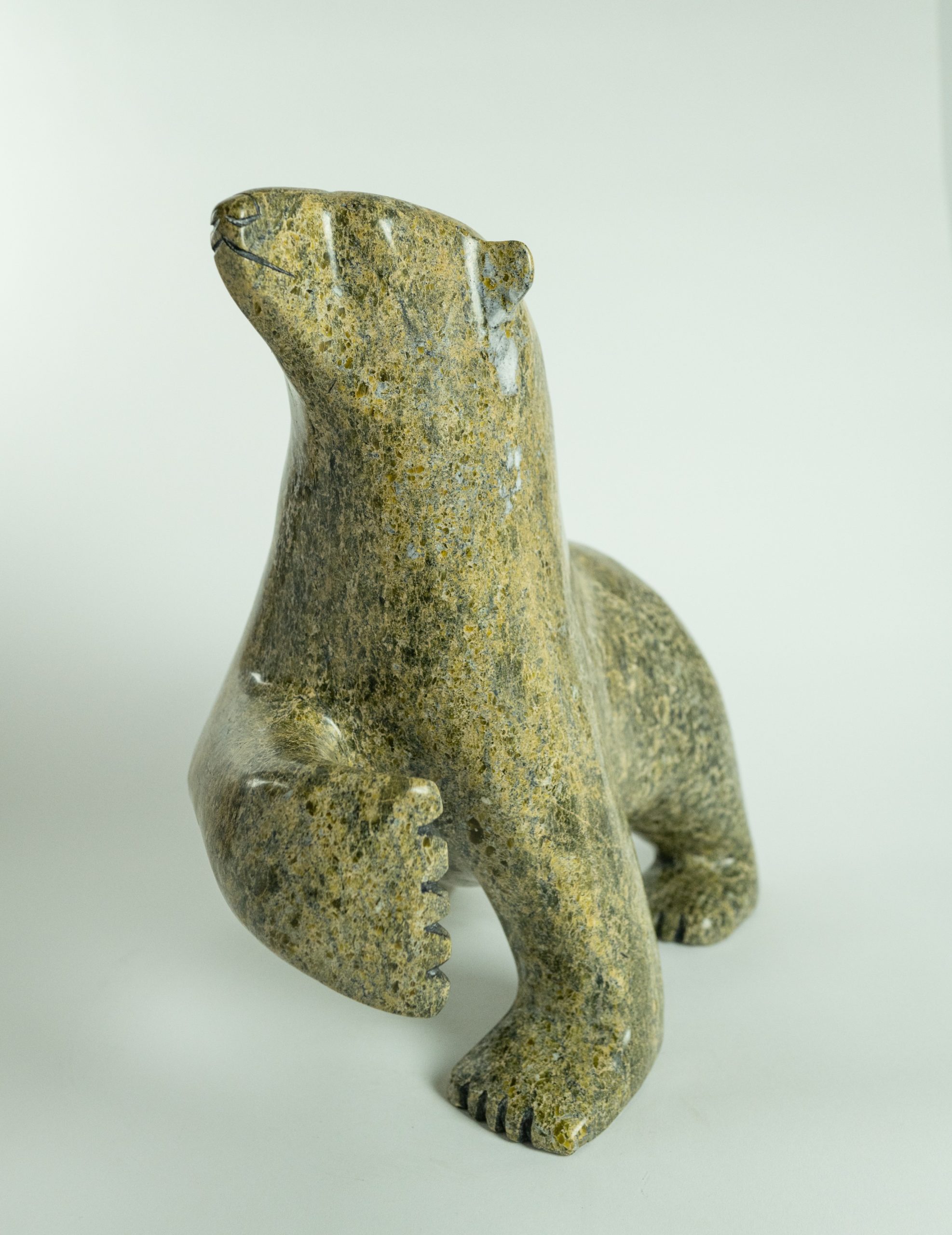
Nuna Parr
Polar Bear, 2012
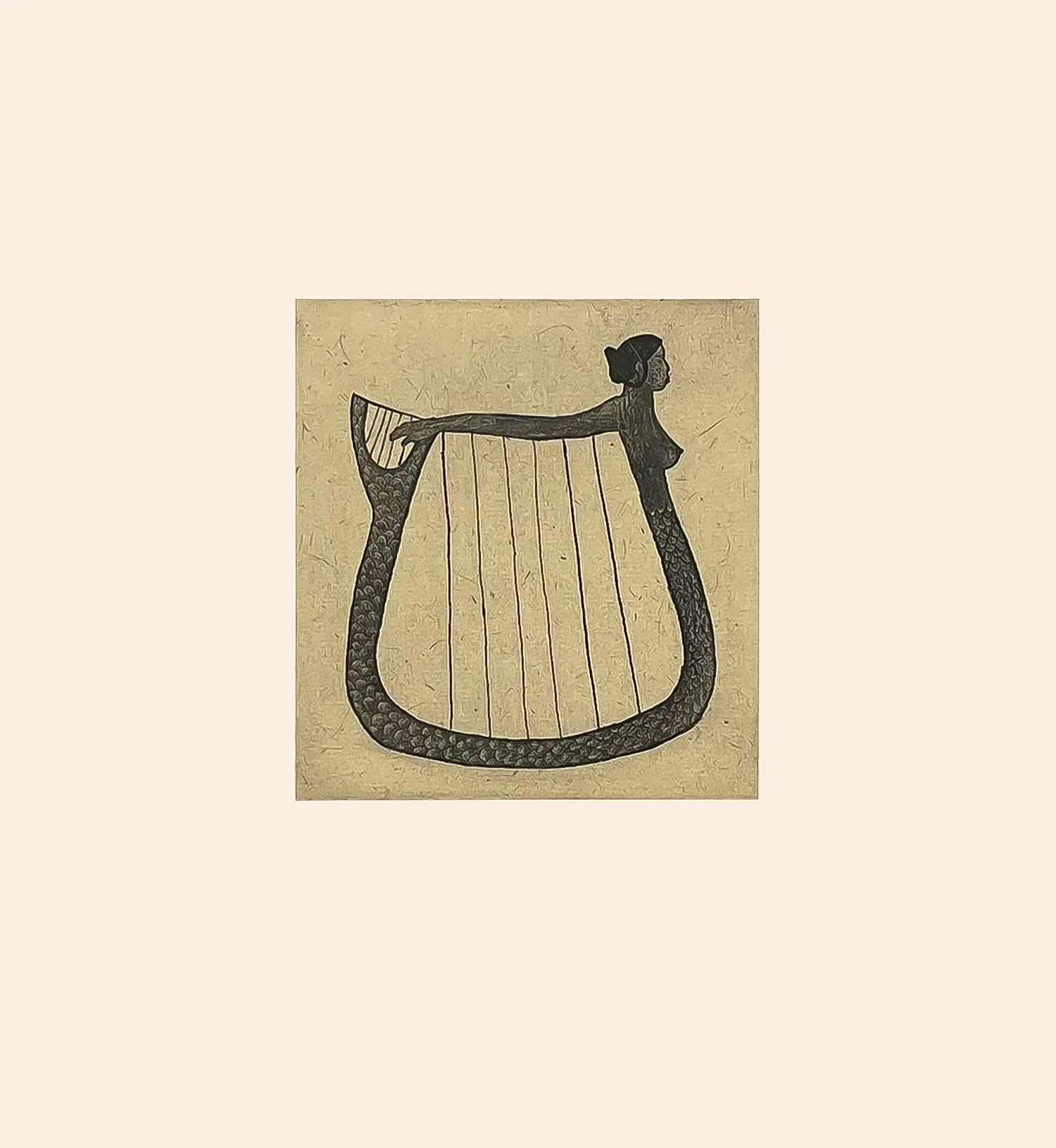
Ningiukulu Teevee
Sedna's Song, 2019
Ningiukulu is one of the most versatile and intelligent graphic artists to emerge from the Kinngait Studios Born May 27, 1963, Ningiukulu is the daughter of Joanasie Salomonie (deceased) and his wife Kanajuk. Her father, Joanasie, was a community leader and much loved in Cape Dorset for his sense of humour, mischief and compassion. In the fall of 2009, Ningiukulu’s first children’s book was published by Groundwood Books (A Division of House of Anansi Press). Entitled Alego, it is an autobiographical story of a young girl named Alego who goes clamdigging with her grandmother for the first time and, along the way, discovers all of the wonders of the seashore. The book was short-listed for the Governor General’s Literary Award for children’s illustration.
Since her first prints appeared in the collection in 2004, Ningiukulu has been one of Kinngait’s studio’s most celebrated artists. She has a comprehensive knowledge of Inuit legends and a fine sense of design and composition. These ele- ments that have made many of her prints highly sought after by collectors. Ningiukulu has had numerous solo shows of her bold and resplendent drawings and some of her work has been featured in exhibitions in major public galleries and museums.
